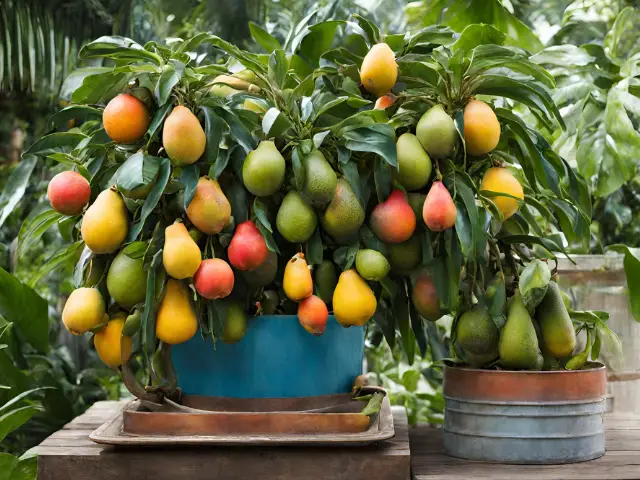Growing Exotic Fruits in Containers: A Tropical Experience at Home
Have you ever dreamt of walking through a lush tropical paradise, surrounded by colorful fruits and intoxicating scents? While jetting off to a faraway land may not be possible for everyone, you can bring a taste of the tropics right into your own home by growing exotic fruits in containers. Not only does it allow you to enjoy an exciting gardening experience, but it also rewards you with an abundant harvest of delectable fruits.
One of the biggest advantages of growing exotic fruits in containers is that it opens up possibilities for those living in colder climates or limited spaces. With the right conditions and techniques, you can cultivate these tropical wonders year-round, even if you don’t have access to a large garden or live in a frost-prone area.
Among the popular choices for container gardening are bananas, citrus fruits like limes and lemons, guavas, passion fruits, papayas, pineapples, and figs. These fruits not only provide a visual delight but also offer unique flavors that will transport your taste buds straight to paradise.
To get started with your tropical gardening adventure, choose a container large enough to accommodate the root system of your selected fruit tree or plant. Make sure it has proper drainage holes to prevent waterlogging.
Next comes soil selection – opt for well-draining potting mix that retains moisture without becoming waterlogged. Many nurseries offer specialty mixes specifically tailored for fruit trees. Remember to feed your plants regularly with balanced fertilizer or organic compost to ensure healthy growth and bountiful yields.
Light is crucial for fruit production. Most exotic fruits thrive under full sun conditions; therefore, place your container near a south-facing window or balcony where they can soak up plenty of sunlight throughout the day. If natural light is insufficient, supplement it with artificial grow lights.
When it comes to watering, maintain consistent moisture levels without overwatering or allowing the soil to dry out completely. Container plants tend to dry out faster, so check the moisture levels regularly and adjust your watering schedule accordingly.
Pruning is another essential aspect of container gardening. Regularly trim your plants to control their size, encourage bushier growth, and promote fruit production. Pruning also helps improve air circulation and prevents diseases that may affect your plants.
One of the greatest joys of growing exotic fruits in containers is the anticipation that builds up as you watch your fruits slowly ripen. Each variety has its own unique ripening process, which adds an element of surprise and excitement to the overall gardening experience.
Once your fruits are ripe and ready, pluck them from the tree or vine with care, savoring their vibrant colors and intoxicating aromas. Then indulge in their flavors straight from your garden – nothing beats the taste of homegrown tropical fruits bursting with freshness!
Apart from being a delightful addition to your culinary adventures, growing exotic fruits in containers allows you to connect with nature on a deeper level. The process itself is rewarding – witnessing the growth from seedling to mature plant, learning about different plant varieties and their specific requirements, and gaining a better understanding of how nature works.
So why wait for a vacation to enjoy tropical fruits when you can create your own tropical oasis at home? With some dedication, patience, and love for gardening, you can embark on a journey filled with delicious rewards – all within the comfort of your own living space. Your friends and family will be amazed when they taste those exquisite homegrown exotic fruits that you nurtured with so much care. So start today and immerse yourself in this tropical experience right at your doorstep!














